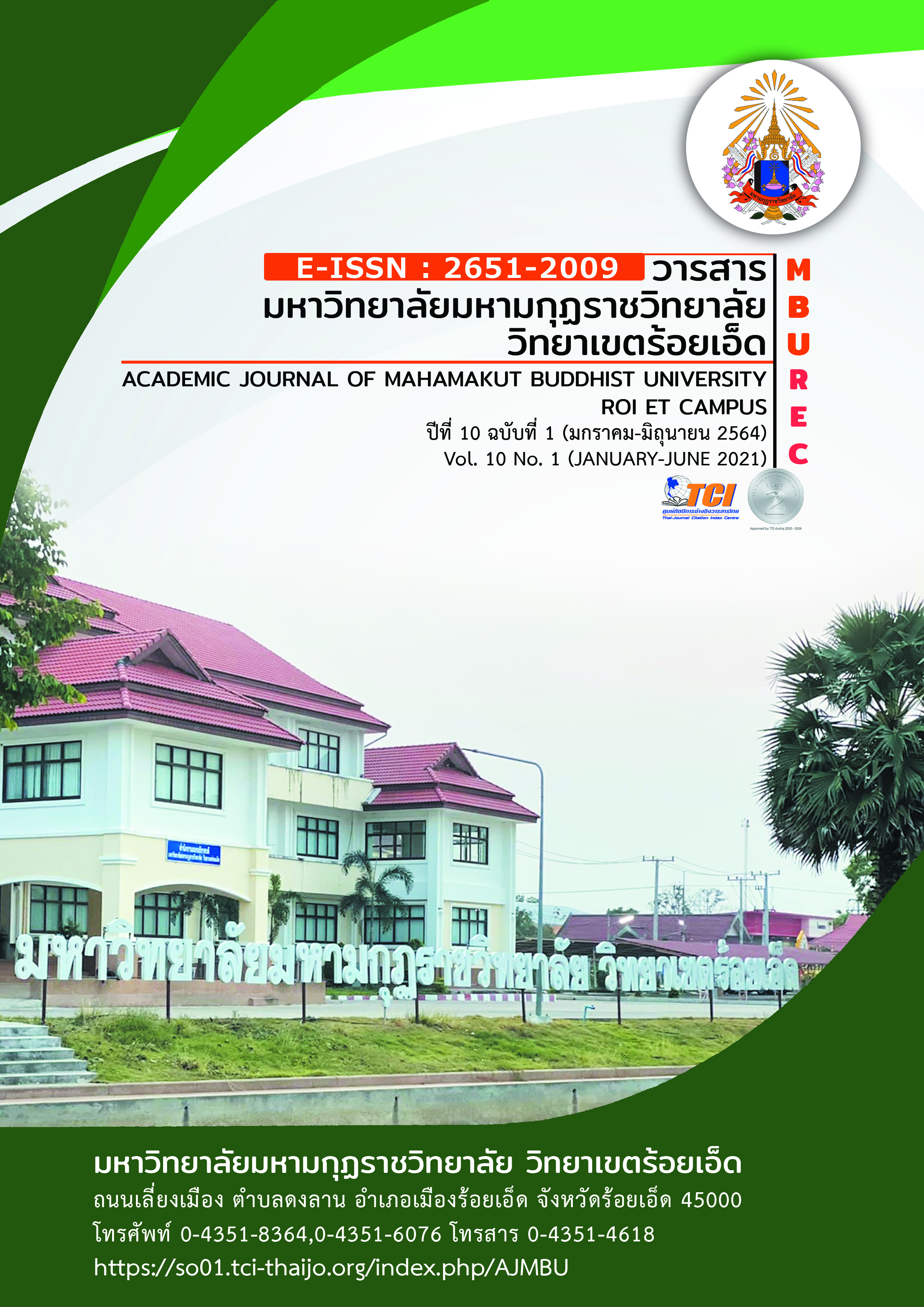The Dissemination of Buddhist Methods for Reducing Aggressive Behavior of Thais in the 21st Century
Main Article Content
Abstract
The objective of the research article were 1) to test the propagation of Buddhism to reduce the aggressive behavior of Thai people in the 21st century; 2)to reduce the aggressive behavior of Thai people in the 21st century and 3) to improve and develop Buddhist propagation methods in order to reduce the aggressive behavior of Thai people in the 21st century. The sample used for this research was youth who were high school students in Central Northeast, 375 people. The tools used for data collection it was a questionnaire. The statistics used in data analysis were average. Standard deviation and test the research hypothesis using one-way analysis of variance (t-test).
The research results were found that: 1. The results of the experiments on the propagation of Buddhist methods to reduce the aggressive behavior of the Thai people in the 21st century found that the overall level was at a high level. 2. Assessment results of trials with gender, age, educational level. Living conditions There is no difference in the media reception, there is no different opinion on the propagation of Buddhism in order to reduce the aggressive behavior of Thai people in the 21st century. 3. Suggestions for improving and developing Buddhist propagation methods to reduce the aggressive behavior of Thai people in the 21st century in compassion is to remember the suffering of others. And always have charity. The kind is that there should be a desire to help or relieve others from suffering from hunger and hardship. The benefit of others to grow even more in the advantage is fairness. And equality with others Respect the thoughts and expressions of others.
Article Details
References
เติมทิพย์ พานิชพันธุ์. (2550). ปัจจัยที่ส่งผลต่อพฤติกรรมก้าวร้าวของเด็กและเยาวชนชายในศูนย์ฝึกอบรมเด็กและเยาวชน เขต 2 จังหวัดราชบุรี. วิทยานิพนธ์ศิลปศาสตรมหาบัณฑิต สาขาวิชาจิตวิทยาชุมชน. บัณฑิตวิทยาลัย : มหาวิทยาลัยศิลปากร.
พระครูปทุมศีลาภรณ์. (2557). การศึกษากับการแก้ปัญหาทะเลาะวิวาทในทัศนะพระพุทธศาสนา. บัณฑิตวิทยาลัย : มหาวิทยาลัยมหามกุฏราชวิทยาลัย.
พระครูพินิจรัตนากร (อนุสรณ์ ฐานทตฺโต). (2556). การประยุกต์พรหมวิหารธรรมในสร้างสันติสุขในอำเภอบางพลี จังหวัดสมุทรปราการ. วิทยานิพนธ์พุทธศาสตรมหาบัณฑิต สาขาวิชาพุทธศาสนา. บัณฑิตวิทยาลัย : มหาวิทยาลัยมหาจุฬาลงกรณราชวิทยาลัย.
พระสราวุธ สุขิโต (ปัดจะมะ). (2558). การประยุกต์ใช้หลักธรรมพรหมวิหาร 4 ในการบริหารงานบุคลากร องค์การบริหารส่วนตำบลสะอาดสมบูรณ์ อำเภอเมือง จังหวัดร้อยเอ็ด. วารสารมหาวิทยาลัยมหากุฏราชวิทยาลัย วิทยาเขตร้อยเอ็ด. 4(1). 209-244.
สุชา จันทร์เอม. (2545). จิตวิทยาเด็กเกเร. พิมพ์ครั้งที่ 6. กรุงเทพมหานคร : โรงพิมพ์ไทยวัฒนาพานิช.
สุนีย์ ธีรวิรุฬห์. (2542). การศึกษารายกรณีนักเรียนที่มีพฤติกรรมก้าวร้าวในเขตกรุงเทพมหานคร. บัณฑิตวิทยาลัย : มหาวิทยาลัยศรีนครินทรวิโรฒ.
หยุด แสงอุทัย. (2532). ความรู้เบื้องต้นเกี่ยวกับกฎหมายทั่วไป. กรุงเทพมหานคร : โรงพิมพ์มหาวิทยาลัยธรรมศาสตร์.


